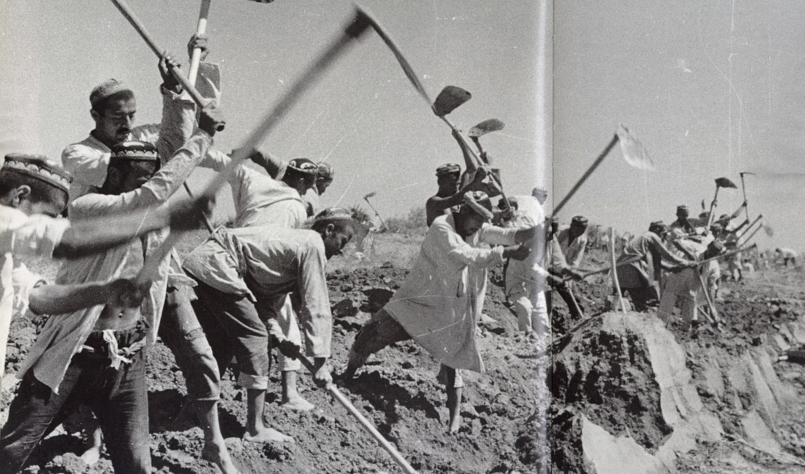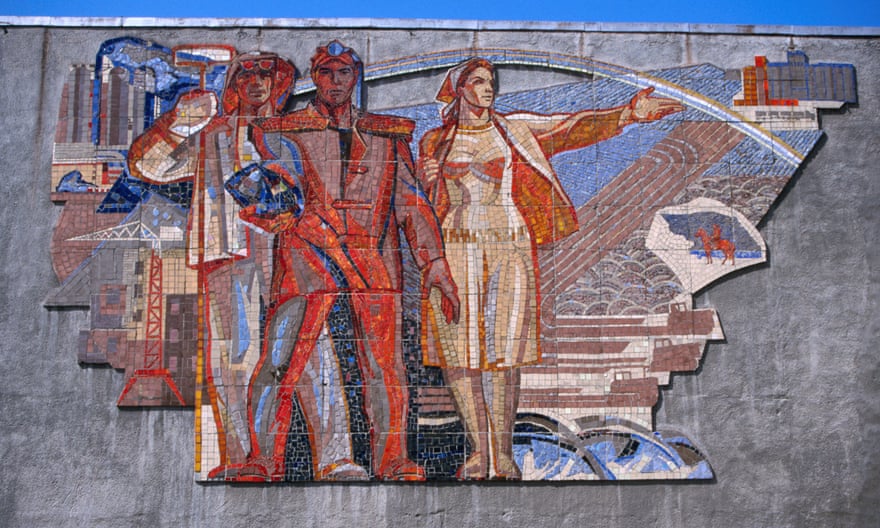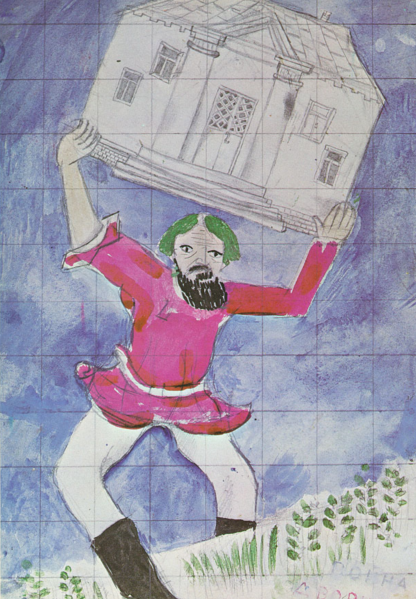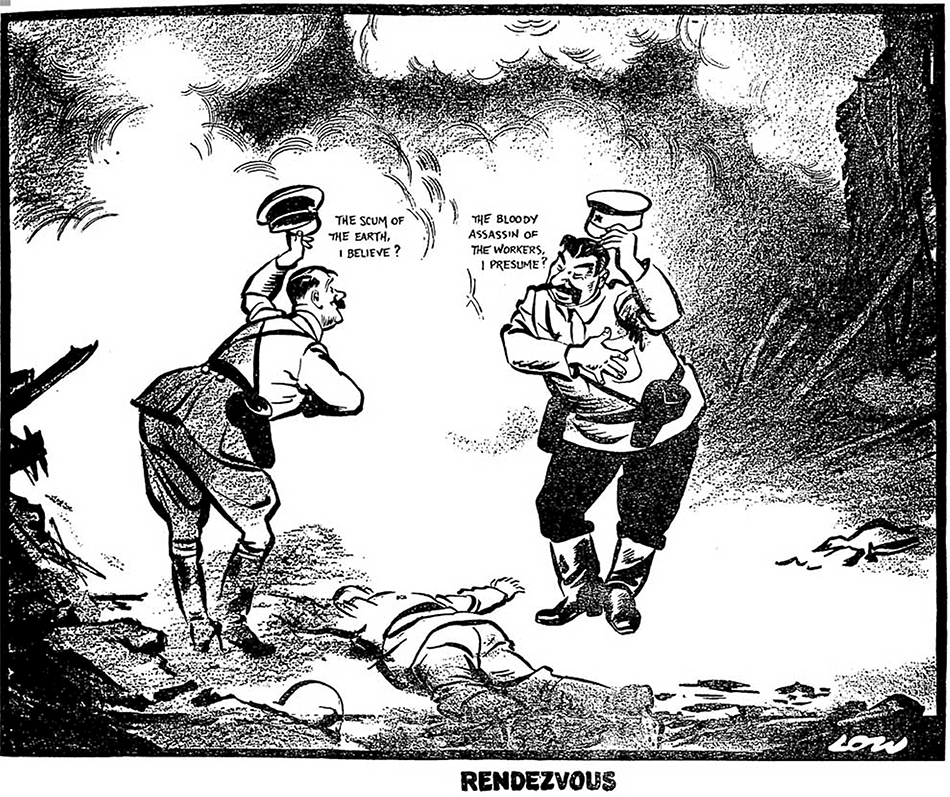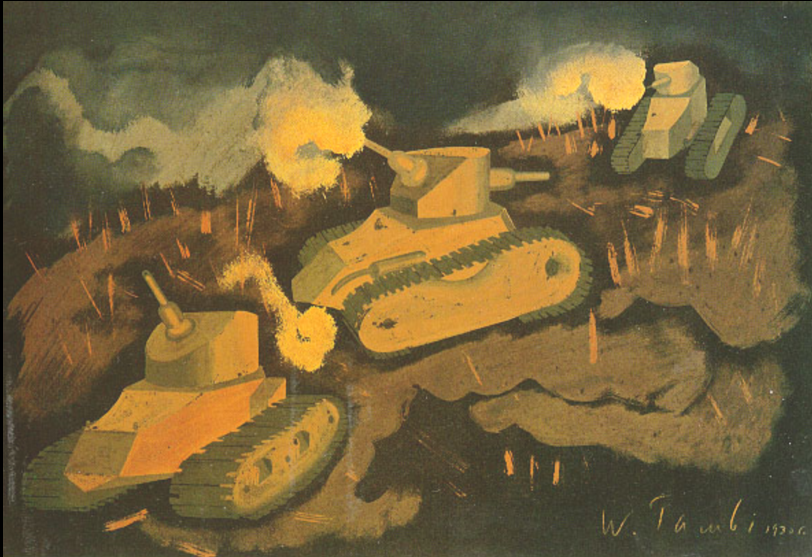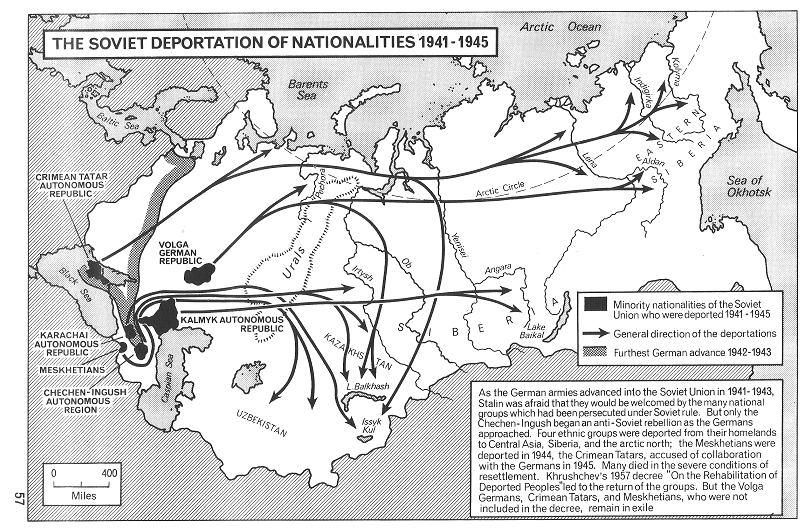
First published on New Politics, 26 April 2023
In The Politics of Unreason (2017), Lars Rensmann poses an important question about fascism and anti-Semitism: namely, are these oppressive phenomena “specific to German or European culture—or rather universal, the byproduct of universal authoritarian phenomena, susceptibilities, and tendencies in modern society […?].”1
This book review essay seeks to answer this question and explore fascism and the far right by examining five recently published anti-fascist (Antifa) and anti-authoritarian volumes: namely, Lars Rensmann’s own The Politics of Unreason; ¡No Pasarán! (2022), edited by Shane Burley; Ilham Tohti’s We Uyghurs Have No Say (2022); Luke Cooper’s Authoritarian Contagion: The Global Threat to Democracy (2021); and Charles Reitz’s The Revolutionary Ecological Legacy of Herbert Marcuse (2022). In general, we agree with the theorists of the Frankfurt School—like Max Horkheimer, Theodor W. Adorno, and Herbert Marcuse—who held that “fascism could happen anywhere,” and that authoritarianism is a “more or less universal modern phenomenon.”2 Likewise, we concur with Paul Gilroy, who writes that “barbarity can appear anywhere, at any time.”3
Accordingly, as we explore these five books, we will confront not only the “brown” fascism indelibly associated with Benito Mussolini, National Socialism (or Nazism), Trumpism, anti-Semitism, and the Holocaust, but also Black, “red” (Communist), Syrian, Indian, and Chinese fascism and authoritarianism. Then, before concluding, we will present some anti-fascist perspectives on Russia’s war of aggression against Ukraine—thus converging, hopefully, with Talia Lavin’s interpretation of Antifa as “a movement of protection.”4
¡No Pasarán! and Decolonizing Fascism
In his essay for ¡No Pasarán!, Matthew N. Lyons interprets the strengthening of far-right forces in the U.S. neither as any aberration to its settler-colonial society, as many liberals hold, nor as a mere tool of hyper-capitalist rule, as many radicals (especially Marxists) claim. Instead, by applying his framework of a “three way fight” among leftists, rightists, and the State, Lyons situates fascists and the far-right as “autonomous force[s] counterposed to both the left and the capitalist state.” Through his analysis of what he terms the U.S. right’s “three big upsurges of the past half century,” Lyons demonstrates the far-right’s often-antagonistic stance toward oppressed people, leftists, their intersections, and the established authorities. In this sense, given the right’s deeply anti-egalitarian commitments, its reluctance to call capitalism into question, and its opportunistic and ultraviolent tactics, Lyons’ chapter may be read as a warning that “the enemy of our enemy is not necessarily our friend.”5 Such a lesson carries important warnings for anarchists about not only the far-right but also the authoritarian left.
In “The Black Antifascist Tradition: A Primer” and “Five Hundred Years of Fascism,” Jeannelle K. Hope and Mike Bento, respectively, consider the connections between white supremacy and fascism for ¡No Pasarán! from decolonial points of view. Reflecting on Aimé Césaire’s comment in Discourse on Colonialism (1950) that fascism is imperialism brought back to Europe, and working from the Bulgarian Stalinist Georgi Dimitrov’s definition of fascism (presented before the Communist International in 1935) as “the open terrorist dictatorship of the most reactionary, most chauvinistic and most imperialist elements of finance capital,” Hope and Bento assert that “[a]ll colonized people [have] lived under fascist rule,” such that their resistance has of necessity been anti-fascist. Along these lines, Hopes interprets the “We Charge Genocide” (1951) report and petition, co-written by Black intellectuals William Patterson, Paul Robeson, and W.E.B. DuBois; the Black Panther Party; the Black Liberation Army; Black Lives Matter; and carceral abolition movements, among others, as anti-fascist.6
There is little doubt that colonial, imperial, and racist violence, as crystallized in the annihilation of Indigenous peoples, the slave trade of Africans, and slavery, has deeply animated fascist politics. In The Origins of Totalitarianism (1948), Hannah Arendt describes a set of “boomerang effects,” whereby European imperialism in Africa—specifically, Germany’s genocides of the Herero and Nama peoples in southwestern Africa (1904–8)—served as “the most fertile soil” for Nazism.7 Adolf Hitler and his fellow Nazis followed the examples of British colonialism in India and the settler-colonial USA, while also looking to the Hindu caste system for inspiration for racial hierarchies.8 Similarly, Oswald Mosley’s British Union of Fascists “drew deeply” from the British Empire, just as Spanish Nationalists and Franquists appeal to nostalgia for imperialist domination.9 In An Indigenous Peoples’ History of the United States (2014), Roxanne Dunbar-Ortiz traces the harrowing ultraviolence carried out by Euro-American settlers against Indigenous communities to observe “Manifest Destiny” and expand U.S. borders.10
Furthermore, history shows that millions of enslaved Africans perished both during abduction to the Americas, and due to bonded labor and racist terror in the thirteen colonies and the independent U.S. As Bento, DuBois, and the Jewish anti-Zionist Norman G. Finkelstein have acknowledged, lynching in the American South was a widespread genocidal practice that predated the legal classification of the crime.11 The ongoing wanton violence visited by police on Black men in U.S. society is a part of this rotten historical continuum. Plus, Ken Burns’ new documentary, The U.S. and the Holocaust (2022), evinces how widespread anti-Semitic attitudes in the U.S. government, and among average citizens, contributed to a failure to intervene against Hitler’s genocide of European Jews. Prior to U.S. entry into World War II, masses of pro-Nazi Americans propagandized in favor of Hitler via the America First Committee, while agitating against President Franklin Delano Roosevelt’s New Deal and advocating for a fascist State.12 In reality, as revealed by one of the Frankfurt School’s studies in exile, Antisemitism among American Labor (1944–5), only a small majority of surveyed workers unconditionally rejected Nazi crimes against Jews, while nearly a fifth supported them.13
For Lars Rensmann, the Shoah, or Holocaust, represents a historical “caesura” and the “world’s ‘central injustice’”: a “previously unimaginable extreme evil.” He is concerned that making comparisons to the Shoah may trivialize its meaning and the “still unmastered legacy of the Holocaust,” just as Benjamin Zachariah worries that the “moral comparison of colonialism and fascism” can “produc[e …] what we might call a ‘concept deflation,’” whereby the term fascism loses its specific meaning.14 Shane Burley, editor of ¡No Pasarán!, expresses similar doubts about the equation of racism and colonialism with fascism in a panel discussion about the book with Firestorm Coop. Despite herself being a Black Panther, Angela Davis likewise disagreed with the Party’s organizing a United Front Against Fascism in 1969, as she found it “incorrect and misleading to inform people that we were already living under fascism.”15 Indeed, the rhetorical equation of liberalism with fascism overlooks how many colonized peoples rejected the Axis powers by supporting the Allies and waging anti-colonial, anti-fascist armed struggle during World War II, thus contributing greatly to formal decolonization in the post-war context.16 Therefore, while liberalism, imperialism, and fascism are related—with the former two opening the possibility for the latter—the means and ends of liberalism cannot be equated with those of fascism.
Black Authoritarianism and Stalinism
By essentializing Black resistance as necessarily being Antifa, Hope ignores the conspiratorial anti-Semitism promoted by individuals and groups like Louis Farrakhan, the Nation of Islam (NOI), Kanye West, and Black Hebrew Israelites. This is not to mention the fascist enthusiasm expressed by Black Hammer after Vladimir Putin ordered a full-scale invasion of Ukraine. Several African states have likewise supported Russia’s ruthless bid to recolonize Ukraine. In contrast to the Black Americans who served in the International Brigades to defend the Spanish Republic, North Africans fought in Francisco Franco’s insurgency against it.17 As well, in 1937, just as Italy occupied Ethiopia, the Pan-Africanist Marcus Garvey, Jr.—referring to his mass-organization, the Universal Negro Improvement Association—claimed, “We were the first Fascists,” and that “Mussolini copied fascism from me.” The next year, C.L.R. James suggested that Garvey’s “storm troopers” in “parades” anticipated Hitler, too. Indeed, Garvey dreamed of mass-repatriation to an “African Empire” enshrining a “superstate,” and repudiated class struggle while preaching violence and anti-Semitism. Such views, in turn, inspired the founders of the NOI. Echoing his father’s enigmatic Black fascism, in 1974, Marcus Garvey III hailed “African National Socialism” and looked forward to an “African ‘Anschluss’ [… and] ‘Lebensraum.’”18
Besides this, Hope does not contest the highly uncritical attitudes that several of her sources take toward the Soviet Union, as an ostensible alternative to the racial capitalism of the settler-colonial, imperialist USA. In parallel, Bento questionably casts Dimitrov, a Stalinist bureaucrat, as a “revolutionary critic of European society.”19 Together, these authors present authoritarian Communism as progressive, authentic, and left-wing, but these are dangerous misrepresentations, in light of the following historical facts: the Bolsheviks’ suppression of the Kronstadt and Tambov uprisings, and of the Makhnovist movement in Ukraine; the horrors of Holodomor and forcible collectivization; the nefarious part played by Stalin and his agents in the Spanish Civil War (1936–9); the August 1939 Nazi-Soviet Pact, which facilitated World War II and the Holocaust, and even involved Stalin leasing Hitler a secret submarine base; the colonialism practiced by the Union of Soviet Socialist Republics (USSR) in Siberia, the Caucasus, Central Asia, Afghanistan, and Eastern Europe; the mass-deportations of minorities; the widespread detention of political prisoners in the Gulag; escalations toward nuclear war during the Cuban Missile Crisis; and the Soviet regime’s sexism and criminalization of homosexuality. For all these reasons and more, anti-fascism and internationalism cannot be consistent with support for the USSR. After all, the Soviet Union implemented a model of red fascism that must be consigned to the dustbin of history.
Syrian Ba’athism and Hindutva
During his incarceration by the British authorities in the 1930’s, the Indian Marxist M. N. Roy distinguished theoretically among “Italian, German, and Indian fascisms.”20 In ¡No Pasarán!, Leila al-Shami and Shon Meckfessel contribute to this project of analyzing diverse fascist movements by considering Syrian Baa’thism—a form of fascism—and its affinities with the U.S. far-right. The authors note how the Ba’athist state’s centralism, corporatism, militarism, and brazen ultraviolence attract and animate the global fascist movement. Not for nothing did Syria’s Ba’athists grant sanctuary to the Nazi war criminal Alois Brunner, who trained the brutal mukhabarat (secret police) in exchange. Authoritarians around the world admire the impunity that Syrian dictator Bashar al-Assad and his backer Putin have enjoyed for their genocidal counter-revolution against a widespread popular uprising that began in 2011. Fox News conspiracists and GrayZone bloggers alike harp on the regime’s innocence for atrocious chemical-weapons attacks, in cases where Assad’s forces are responsible beyond any reasonable doubt.21 In this light, GrayZone would appear to mimic Fox‘s business model, as highlighted by the defamation case brought by Dominion Voting Systems over the 2020 U.S. presidential election, through its airing of demonstrably false claims for profit.
Yet, it has sadly not only been the far-right that has contributed to Assad and Putin’s victories. In the wake of the catastrophic U.S.-led invasion and occupation of Iraq (2003–11), many Western leftists, especially Marxists, have abandoned the Syrians openly fighting the regime for twelve years now. According to Sri Lankan trade unionist Rohini Hensman, this pseudo-anti-imperialist phenomenon responds to demands for conformity with campist geopolitical notions about unquestionable solidarity with “anti-imperialist” states and power blocs against the West.22 Presumably for similar reasons, many Euro-American anarchists have guarded silence on Assad for years, preferring to focus on the progressive accomplishments of the Rojava Revolution. Still, avoiding a critical confrontation with Ba’athism is to be expected of Marxists, in light of their track record on the USSR and Maoist China, but less so of anarchists, considering our supposedly radical anti-statism. In this sense, recalling the tragic fate of the Spanish Civil War over eighty years ago, the destruction of the Syrian Revolution—which has taken up to a million lives, and displaced millions of others—gravely illuminates the left’s vast shortcomings and contradictions. As al-Shami and Meckfessel observe, such an unfortunate turn of events leads us to muse over what an authentic anti-fascist internationalism might look like.23
Undoubtedly, if we return to Roy’s theoretical distinctions, this cause of global anti-fascism would require that Western antifascists “support their South Asian comrades against Hindutva,” or Hindu nationalism, as Maia Ramnath writes in “The Other Aryan Supremacy,” her essay for ¡No Pasarán! The toxic Hindutva movement, championed by India’s authoritarian Prime Minister, Narendra Modi, represents an aggressive repudiation of the secular-democratic pluralism envisioned by Jawaharlal Nehru, the post-colonial country’s first prime minister, and the long-ruling Indian Congress Party, which Modi’s Bharatiya Janata Party (BJP) has now defeated twice at the polls: namely, in 2014 and 2019. Along these lines, the expulsion of Congress leader Rahul Gandhi from parliament in March 2023 bodes especially poorly for India’s political future. Modi’s conservative authoritarianism is underwritten by big business, writes Arundhati Roy. According to Ramnath, present-day Hindutva is a mix that “includes precolonial brahminism, internalized colonial-era Orientalist tropes, and pathologies of postcolonial nationalism, which distort anticolonial rhetoric” to shore up convention and social hierarchy.24
After all, it was Nathuram Godse, a Hindu nationalist from the fascistic Rashtriya Swayamsevak Sangh (RSS), who assassinated Mohandas K. Gandhi 75 years ago. Godse was retaliating against the spiritual leader’s secular-republican politics and calls for peaceful co-existence with Muslims following the bloody Partition of India and Pakistan in 1947. Moreover, as a prominent sanghi (fundamentalist extremist) of the RSS, which created the BJP as a political front in 1980, Modi both incited Hindu mass-violence against Muslims in Gujarat in 2002, and ordered police to stand down against pogromists, as the state’s chief minister at the time. In fact, in January 2023, Modi’s government invoked emergency laws to censor a new BBC documentary on the prime minister’s role in this wave of communal violence, just as a feature film about Godse is on the horizon for the Indian market. Demonstrating the entrenchment of Hindu chauvinism, Ramnath reports that “[t]he frequency of lynchings and atrocities against Dalits and Muslims has leaped significantly since 2014,” whereas Modi’s rule has only intensified India’s occupation of Muslim-majority Kashmir, in a manner reminiscent of Israel’s occupation of Palestine.25
Ramnath traces the bleak dialectic, whereby Nazi racial theory took after German Indologists’ examination of Brahminical society, while Hindutva enthusiasts in turn have mobilized Brahminism in the fashion of Italian Fascism and German ultranationalism. In India, RSS front groups have targeted Christians, Muslims, communists, and intellectuals, and agitated in favor of the demolition of mosques built during the Mughal Empire (1526–1858), a Muslim dynasty. Meanwhile, many Hindutva sympathizers from the South Asian diaspora in the U.S. have aligned themselves with Trump and white supremacy. In this sense, the uncritical views that Hindu nationalists take toward the caste system complement alt-right, neo-Nazi notions about “natural hierarchies” well.26
Akin to Assadists, Hindu nationalists tend to affirm pseudo-anti-imperialism. In other words, they use post-colonial, anti-Western discourse to strengthen the cause of Brahminical fascism. Sanghis focus on such strategies in rather bad faith, considering Ramnath’s point that “[c]olonialism and empire in South Asia are not just about European versus Asian, but [also about] various centralizing states versus various regions and borderlands, ancient and modern,” such that South Asians, especially Indians, cannot “shun[t] all blame for all ills to colonialism.” In contrast, a more authentic anti-imperialism would be anti-fascist, anti-capitalist, humanist, and caste-abolitionist.27
China’s Genocide of Uyghurs
In The Search for Neofascism (2006), A. James Gregor argues that Maoist (1949–1978) and post-Maoist China (1978–present) have instituted “fascism with Chinese characteristics.” In reality, Gregor recounts how Ugo Spirito, one of Mussolini’s main ideologues, visited China in the early 1960’s, and came to admire Maoism’s anti-liberalism, anti-individualism, and totalitarian regimentation as reminiscent of Fascist Italy. Through its corporatism, hyper-nationalism, militarism, and aggressive expansionism—especially targeting Taiwan—the Chinese Communist Party (CCP) has arguably imposed a fascist regime.28
We Uyghurs Have No Say (2022) features translations of the writings of Ilham Tohti, a progressive economist from China’s mostly Muslim Uyghur minority whose father died tragically during the Maoist Cultural Revolution (1966–1976). Tohti himself has been serving a life sentence for “separatism” since 2014. Despite his criticisms of the CCP, he is a minority intellectual who sought to work within its constitutional framework to improve the condition of his fellow Uyghurs, and to increase autonomy through legal channels, while opposing calls for the independence of so-called ‘East Turkestan.’ Though he sought a “win-win situation” for Uyghurs and majority Han Chinese alike, based on his support for ethnic self-determination, national unity, and “Chinese patriot[ism],” Tohti merely ended up being punished by the State for his speech, thought, and action.29
Spanning the years 2005–2014, the dissident’s essays and interviews collected in this volume trace the increasingly suffocating atmosphere for Uyghurs in China’s northwestern region of Xinjiang. In parallel, Tohti increasingly senses that “the Chinese government is trying to get rid of me.” As Rian Thum clarifies in the preface, these commentaries predate the CCP’s openly genocidal policies, beginning in 2017, of sequestering millions of Uyghurs in concentration camps, forcibly separating Uyghur children from their families, and destroying thousands of mosques. Through his critical analysis of what he terms another “Great Cultural Revolution that is destroying the indigenous culture,” Tohti provides profound insights, according to Thum, into “a world of multipolar colonialism”—that is, one in which numerous States and power-blocs compete in a ‘Great Game’ of colonialism. As the Indian ex-Stalinist Kavita Krishnan describes, “Multipolarity has always meant multi-imperialism [and] multi-despotism.” Tohti’s text thus provocatively shows that the “West’s monopoly on imperialism has been broken, if in fact it ever existed.”30
Notably, CCP General Secretary Xi Jinping has sought to rationalize these ghastly policies against Uyghurs and other ethnoreligious minorities by explicitly emphasizing security and stability over human rights. In 2018, an editorial in the official Global Times newspaper declared that the crackdown was necessary to avert Xinjiang becoming “China’s Syria” or “China’s Libya.” In 2019, The New York Times published the “Xinjiang Papers,” which reveal that Xi had “urged the party to emulate aspects of America’s ‘war on terror’ after the Sept. 11 attacks” in carrying out his orders. Through these actions, Xi has joined not only the U.S. but also Russia, Israel, Syria, and India in mobilizing the War on Terror to exploit and dominate Muslims. In this sense, “China sometimes appears as a distorted mirror image of Trump’s America.” Indeed, Xiism seeks not to change the world, but rather, to maximize China’s position in the world as it is.31
In We Uyghurs Have No Say, Tohti warns of the dangers of “ethnonationalist totalitarianism” in China, openly identifies the Han-Chinese chauvinism encouraged by the CCP as an obstacle to inter-ethnic harmony in Xinjiang, and calls on Han people to “reflect on their own nationalist and fascist attitudes.” Without ignoring ethnic nationalism, extremist movements, or terrorism among Uyghurs, Tohti insightfully identifies how the CCP’s dismissal of minorities’ right to autonomy will lead inevitably either to forcible assimilation or to the intensification of separatist sentiments. As an alternative to both, Tohti yearns for the transformation of China into a democracy that respects human rights and Uyghur self-rule.32
Anti-Semitism, The Origins of Totalitarianism, and The Politics of Unreason
In his chapter for ¡No Pasarán!, Benjamin Case analyzes Arendt’s The Origins of Totalitarianism, anti-Semitism, and the far-right today. Case reminds us that, before turning to “Imperialism” and “Totalitarianism,” Arendt begins her study by examining “Antisemitism.” With reference to history and present, Case identifies how anti-Semitism underpins the fascist anti-modernist desire to return to the past (as in MAGA, or “Make America Great Again”); the “socialism of fools,” whereby right-wing forces substitute a crude anti-capitalism with hatred for Jews; and a “nationalist internationalism” that is ironically based on envy of Judaism. Plus, for all the justice of the Palestinian cause, the writer is right to point out that anti-Zionist organizing can sometimes promote and overlap with Judeophobia. This is not to deny worsening tendencies toward Israeli fascism, especially under the current far-right government, much less the Jewish State’s diplomatic normalization with anti-Semitic regimes like the United Arab Emirates. That being said, the left’s discomfort and lack of familiarity with Judaism have often served far-right interests: after all, Mikhail “Bakunin was a canonical anarchist thinker and an outright antisemite” who influenced the proto-Nazi composer Richard Wagner in the nineteenth century, while more recently, unchecked anti-Semitism in the UK’s Labour Party contributed to the Conservative Party’s decisive electoral victory in 2019.33
In The Politics of Unreason (2017), Lars Rensmann contemplates the Frankfurt School theorists’ critique of anti-Semitism as being “linked to a universalistic critique of political and social domination in all its forms […].” In fact, social research performed over the past century has revealed that having anti-Semitic attitudes makes one more likely to be racist, sexist, homophobic, and authoritarian. Plus, history shows the evidently close link between expressions of Judeophobia and the possibility of genocide against Jews. In this sense, Rensmann upholds the “critical cosmopolitanism” and “positive concept of enlightenment” espoused by the Critical Theorists, who “unconditionally oppos[e] the dehumanization of any group, minority, or Other in global society.”34
Though ostensibly Marxist, the Frankfurt School theorists go beyond Marx through their focus on the Holocaust, which leads them to conclude that “the history of all hitherto existing society is the history of domination.” From this dynamic, the Critical Theorists identify an overriding categorical imperative to avert all future genocides. In sociological terms, the Frankfurt School thinkers are unique, in that they believe anti-Semitism and authoritarianism to not only be encouraged from above, but also be very much driven from below. On this view, the average worker in modern capitalism is “profoundly damaged […] and stultified by universal domination,” such that authoritarianism affects all classes.35
By revisiting Freudian psychoanalysis, Rensmann explains how the Critical Theorists perceive close ties among the imposition of labor and the loss of freedom, mental-sexual frustration, political powerlessness, violence, and the acceptance of existing power structures, as symbolized by the father-figure or superego. Given that capitalism “structurally den[ies] the pleasure principle and enforc[es] the primacy of the repressive reality,” the life-drive known as Eros is attenuated, to the benefit of the death-drive, Thanatos. As Sigmund Freud and his Frankfurt School-affiliated critic Erich Fromm understood, capitalist society encourages the two poles of sadomasochism: that is, authoritarian aggression and submission. By weakening the ego and/or breaking the spirits of children, parents, teachers, and bosses train future generations to surrender themselves and accept the plans of those in power. Bourgeois coldness, anomie, and lovelessness lead to the redirection of erotic energy toward labor and authority, thus reproducing a vicious cycle, whereby social hierarchy perpetuates aggression, and vice versa.36
Following the Critical Theorist Adorno, Rensmann suggests that authoritarians turn their frustration against outgroups, non-conformists, and minorities like Jews, rather than the authorities, whom they follow and obey. Though they forsake individuality, authoritarians are compensated via “narcissistic uplift” by the small part they play in a larger machine. This goes even for the “rebellious conformists,” like Lyons’ conception of far-rightists, who may seek to overthrow the existing authorities, only to establish new ones. Uniting right and left-wing authoritarians, this category would also include conspiratorial anti-Semites, who demonize Jews rather than question capitalism and social domination, starting from the “socialism of fools” and hatred of self and other.37
Critical Theory warns us that fascism and murderous anti-Semitism can be unleashed when social groups are stressed, agitated, paranoid, dominated by instrumental reason, and lacking a theory of liberation. In this vein, the politics of unreason—crystallized in Trumpism, the global right-wing resurgence, and widespread ignorance of Nazi crimes—represents a specter of “anti-civilizational revolt” that threatens “democracy […] in our time.” Just as the concept of “secondary anti-Semitism,” whether expressed in Holocaust denialism or outright sympathy for fascism, constitutes a Freudian return of the repressed, so “Nationalism Socialism lives on,” and “Hitler survives.”38
Authoritarian Illness
Luke Cooper’s Authoritarian Contagion: The Global Threat to Democracy underscores ongoing socio-political struggles between “democratic internationalism” and “authoritarian protectionism”—the latter being another term for conservative or capitalist authoritarianism, having little to do with economic protectionism. Authoritarian protectionism is an outgrowth of the authoritarian individualism promoted during the onset of neoliberalism in the 1980’s. Its proponents reject pluralism and democracy, just as they reject the progressive social changes that have taken place in recent decades. Their aggressive racism, nationalism, and quest for autocratic rule not only inflame far-right and fascist movements—as through viral contagion and mass-psychosis—but also represent significant obstacles to global cooperation for confronting problems like global warming and the COVID-19 pandemic.39
In his book, Cooper rightly focuses on the role of path dependence in facilitating the greatest ills plaguing global society: namely, the insurgent far right, consolidating authoritarianism, global warming, and COVID-19. In other words, the author stresses that past choices have deeply influenced the onset of these socio-political ills, hence also limiting our options for effective resistance. The specter of climate breakdown probably illustrates this dynamic better than anything else. That being said, Cooper’s framing of authoritarian contagion refers dialectically both to threats (replication, spread, colonization) and solutions (infection control). As healthcare workers know, there are many different ways to break the chain of infection. Against authoritarians of all kinds, a radical politics of survival emphasizes internationalism, justice, democracy, cooperation, ecological transition, redistribution, inclusion, and pluralism.40
Critical Theory and Anti-Fascism
In The Revolutionary Ecological Legacy of Herbert Marcuse (2022), Charles Reitz focuses on the writings and activism of this Critical Theorist—who, being “very interested in council communism” and a principled opponent of the Vietnam War, was perhaps the most radical of them all—with an eye toward “negat[ing] neofascism definitively,” and aiding “in the establishment, through a global ecosocialist rising, of a culture of partnership power.” Reitz seeks the convergence of the environmental and labor movements to build a cooperative commonwealth that would implement the radical rather than minimum goals of socialism. He applies Marcusean theory to dissect U.S.-American traditionalism, counter-revolutionary authoritarianism, racism, and imperialism, plus Trump and his ilk.41
Reitz’s argument revolves centrally around Marcuse’s 1965 essay, “Repressive Tolerance,” which the author identifies as “a product of [Marcuse’s] critique of German fascism and […] genocide.” In this polemical piece, the late Critical Theorist denounces the “pure tolerance” observed in bourgeois society, which considers fascism, racism, and anti-Semitism acceptable. Despite the fact that free-speech absolutism effectively “protects hate speech and facilitate[s] hate crimes,” especially in the USA, it must not be tolerated! In this sense, “Repressive Tolerance” represents an important part of the Marcusean “Great Refusal” of domination and the struggle for collective liberation. Reitz even praises my elucidation of this essay in Eros and Revolution (2016/2018) as a clarion call for revolutionary suppression of fascism from below, akin to the anarchist CNT-FAI’s fateful July 1936 uprising, which blocked Franco’s attempted coup d’etat—at least, temporarily.42
Nevertheless, when commenting on Russia’s ongoing war on Ukraine, Reitz acknowledges its “pronounced brutality against civilians” and total lack of legitimacy, but he insists that “Russia’s war has not emerged from nothing.” He cites an April 2022 international statement signed by groups in Russia, Ukraine, and elsewhere, including the International Marxist-Humanist Organization, which wrongly identifies the “main culprit” of Putin’s assault as “U.S. imperialism.” Rather than critique Russian chauvinism or focus on Ukrainians—beyond citing attacks on Kyiv and the ruins of Mariupol in passing—the author expresses concern about a supposed “war [by the West] against Russia for Ukraine” involving a “new McCarthyism that will try to silence U.S. antiwar dissent.”43 In light of the daily torrent of Russian atrocities in Ukraine over the past year-plus, such framing may conflict with Marcusean principles of “active genocide prevention.”44
Russia’s War on Ukraine

Undoubtedly, one of the most important fronts in the global anti-fascist struggle over the past year has been Ukraine, following Russia’s full-scale invasion, as ordered by Putin in February 2022. Guardian editor Julian Borger observed in late January 2023 that “[t]he Bosnian war death toll of 100,000 has most probably already been surpassed” on both sides over the past year. Recalling the fate of Aleppo in 2016, Russia has killed over 25,000 civilians in the city of Mariupol during this time, according to Ukrainian officials. Psychoanalytically speaking, it is evident that Putin’s megalomania and paranoia underpins this genocidal aggression, which has involved the desolation of entire cities, the direct targeting of civilians, rampant sexual violence, and the forcible deportation of Ukrainian children into Russia.45
While the German government and public have changed their minds about the transfer of heavy weapons to Ukraine with time, presumably in light of Putin’s outrageous war crimes, a majority of Germans still believes the West should encourage the embattled Ukrainian President Volodomyr Zelensky to accept “peace negotiations”—despite that these would likely take place on Putin’s terms. However, the majority of Ukrainians themselves reject the idea of conceding territories occupied by Russia in exchange for a cease-fire. Rather, they seek to repel the invaders and liberate these territories. Actually, in support of such defiance, in January 2023, Germany, the U.S., and the UK took the unprecedented step of greenlighting the transfer to Ukraine of not only over a hundred armored infantry fighting vehicles, but also dozens of main battle tanks from the Leopard, Abrams, and Challenger classes. Now that Germany has authorized re-export of the Leopards, other countries from the North Atlantic Treaty Organization (NATO)—such as Poland, Spain, and Norway—plan to send more.
Even so, here in the U.S., Republican extremists in Congress and pseudo-anti-imperialist groups like the GrayZone, Code Pink, and the International Committee of the Democratic Socialists of America have come together to denounce the Biden administration’s policy of strong military, political, and financial support for Ukraine. They grumble about costs, focus on the risks of U.S. policy escalating toward nuclear war, and call for compromises with Russia. At the same time, these conservatives, authoritarian rebels, and neo-Stalinists—being conformists who are performing non-conformism—do not criticize Putin’s use of nuclear blackmail to seize Ukrainian territory and commit horrendous war crimes. In contrast, the Russian Socialist Movement recognizes that a victory for Putin in Ukraine would would merely set the stage for “new military and political catastrophes” across the globe. Likewise, the Japanese Communist Party has condemned the Russian dictator’s open threats to use nuclear weapons. In light of the risk that Putin’s assault on Ukraine could inspire Xi Jinping to attack Taiwan, leading to a Third World War between China-Russia-North Korea and the USA-NATO-Japan, the Japan Revolutionary Communist League calls on workers everywhere to resist the return of Stalinist terror in Ukraine, and “stir up a storm of antiwar struggle in every corner of the world to crush Putin’s war!”46
Conclusion
Returning to the question posed by al-Shami and Meckfessel in ¡No Pasarán!, we conclude that anti-fascist internationalism requires us to take a universally critical attitude toward authoritarianism, wherever it may appear. We must oppose the “kinship” that Gilroy sees “among all supremacist regimes […].”47 Thus, global anti-authoritarianism urgently demands the rejection of fascist oppression, Western or non-Western, “brown” or “red,” whether wielded at present, in the past, or in the future. So let us proclaim, “Down with Franco, Hitler, Mussolini, and Stalin! Down with Assad, Putin, Xi, and Modi! Russia, Out of Ukraine! Trump, Never Again!”
In closing, when dealing with fascists, we should keep in mind the failures of the 1938 Munich Agreement on the one hand, and, on the other, the lessons of Marcuse’s “Repressive Tolerance”; the struggles of Haitian revolutionaries in the eighteenth and nineteenth centuries, and of Spanish and Austrian workers in the late 1930’s; the Warsaw Ghetto uprising; and the Ukrainian resistance: namely, that appeasement fails, and that direct confrontation with the aggressor is typically necessary. This does not mean that appeals to the rule of law; the use of legal authority; or the spread of information in settings with or without freedom of speech, the press, and/or assembly have no place in the fight against racism, hate speech, anti-Semitism, and violent authoritarianism.48 As part of a diversity of tactics for collective liberation, they arguably do.
Ultimately, though, the consensus from the authors reviewed here is that the anti-fascist and anti-authoritarian causes require profound socio-economic and political changes at all levels of global society. Some specialists in psychoanalysis and Critical Theory, like Marcuse, Rensmann, and Reitz, stress the mental and emotional dimensions of capitalist and fascist aggression. Lyons correctly emphasizes how the protean far-right can both serve and oppose the State and elite. Arendt, Hope, Bento, Ramnath, Case, and Tohti illuminate the intimate and multifaceted ties between racism and fascism. Cooper defies authoritarian contagion with a radical politics of survival. Al-Shami, Meckfessel, Rensmann, and Tohti warn us wisely about the pseudo-anti-imperialists and rebellious conformists who act like the “running dogs” of such non-Western autocracies as Russia, China, Syria, and Iran.49
The question is, can we build a worldwide anti-fascist movement to reconstruct global society before it is too late? Our very future depends on it.
Works Cited
Adorno, Theodor W. 2005. Minima Moralia: Reflections on a Damaged Life. Trans. E. F. N. Jephcott. London: Verso.
Al-Shami, Leila and Shon Meckfessel 2022. “Why Does the US Far Right Love Bashar al-Assad?” ¡No Pasarán! Ed. Shane Burley. Chico, Calif.: AK Press. 192–209.
Arendt, Hannah 1968. The Origins of Totalitarianism. San Diego: Harcourt.
Bento, Mike 2022. “Five Hundred Years of Fascism.” ¡No Pasarán! Ed. Shane Burley. Chico, Calif.: AK Press. 312–330.
Cooper, Luke 2021. Authoritarian Contagion: The Global Threat to Democracy. Bristol: Bristol University Press.
Davis, Angela 1974. An Autobiography. New York: Random House.
Dunbar-Ortiz, Roxanne 2014. An Indigenous Peoples’ History of the United States. Boston: Beacon Press.
Executive Committee for the 60th International Antiwar Assembly 2022. “Working people all over the world, unite to crush Putin’s war!” Japan Revolutionary Communist League. Available online: http://www.jrcl.org/english/e-AG2022.html [insecure link]. Accessed 28 January 2023.
Finkelstein, Norman G. and Ruth Bettina Birn 1998. A Nation on Trial: The Goldhagen Thesis and Historical Truth. New York: Metropolitan Books.
Gilroy, Paul 2000. “Black Fascism.” Transition 81/82. 70–91.
Gregor, A. James 2006. The Search for Neofascism: The Use and Abuse of Social Science. Cambridge: Cambridge University Press.
Hensman, Rohini 2018. Indefensible: Democracy, Counterrevolution, and the Rhetoric of Anti-Imperialism. Chicago: Haymarket Books.
Hope, Jeanelle K. 2022. “The Black Antifascist Tradition: A Primer.” ¡No Pasarán! Ed. Shane Burley. Chico, Calif.: AK Press. 63–87.
James, Leslie 2021. “Debate: Decolonising Fascist Studies.” Fascism 010. 325–7.
Lavin, Talia 2022. “On the Uses and Manifestations of Antifascism.” ¡No Pasarán! Ed. Shane Burley. Chico, Calif.: AK Press. 1–3.
Liburd, Liam 2021. “Debate: Decolonising Fascist Studies.” Fascism 010. 331–3.
Lyons, Matthew N. 2022. “Three Way Fight Politics and the US Far Right.” ¡No Pasarán! Ed. Shane Burley. Chico, Calif.: AK Press. 20–41.
Ramnath, Maia 2022. “The Other Aryan Supremacy: Fighting Hindu Fascism in the South Asian Diaspora.” ¡No Pasarán! Ed. Shane Burley. Chico, Calif.: AK Press. 210–57.
Reitz, Charles 2022. The Revolutionary Ecological Legacy of Herbert Marcuse. Wakefield, Québec: Daraja Press.
Rensmann, Lars 2017. The Politics of Unreason: The Frankfurt School and the Origins of Modern Antisemitism. Albany: State University of New York Press.
Thum, Rian 2022. “Preface: Ilham Tohti and the Uyghurs.” We Uyghurs Have No Say. Trans. Yaxue Cao et al. London: Verso. Vii-xvii.
Tohti, Ilham 2022. We Uyghurs Have No Say. Trans. Yaxue Cao et al. London: Verso.
Zachariah, Benjamin 2021. “Debate: Decolonising Fascist Studies.” Fascism 010. 339–43.
Footnotes
1Rensmann 71.
2Ibid 71, 148.
3Gilroy 91.
4Lavin 2.
5Lyons 21–22, 41.
6Bento 314–5 (emphasis added); Hope 65–87.
7Arendt 206.
8Ramnath 253.
9Liburd 332.
10Dunbar-Ortiz.
11Bento; Finkelstein and Birn.
12Lyons 23; al-Shami and Meckfessel 204.
13Rensmann 156.
14Ibid 5, 20, 277, 385; Zachariah 340.
15Davis 198–9.
16James 327.
17Zachariah 340.
18Gregor 118–31; Gilroy 70, 75, 86.
19Bento 314.
20James 326.
21al-Shami and Meckfessel 192–204.
22Hensman.
23al-Shami and Meckfessel 209.
24Ramnath 254, 257.
25Ibid 211, 226–7.
26Ibid 212, 217, 242.
27Ibid 249–50, 254.
28Gregor 228, 234–40, 250–55.
29Tohti 30, 130, 142, 153.
30Ibid 116, 126; Thum xvi.
31Cooper 61, 101.
32Tohti 10, 72, 86, 104–6, 137, 152, 168.
33Case 364–75.
34Rensmann 10, 173, 211, 415, 417.
35Ibid 25, 60, 233, 272.
36Ibid 33–58, 65–9, 83–9, 95–100, 225.
37Ibid 101–10, 114–24, 127–32, 189–96, 199, 257, 333.
38Ibid 235, 273, 337, 356, 359–77; Adorno 109.
39Cooper 16, 71, 131.
40Ibid 12–13, 133–9.
41Reitz xv, 1–11, 14, 66–7, 81.
42Ibid 17, 27, 38, 40.
43Ibid 150, 153, 155, 173.
44Rensmann 418–20.
45Ibid 530n15.
46Executive Committee for the 60th International Antiwar Assembly.
47Gilroy 89.
48Rensmann 353, 415.
49Tohti 165.





















